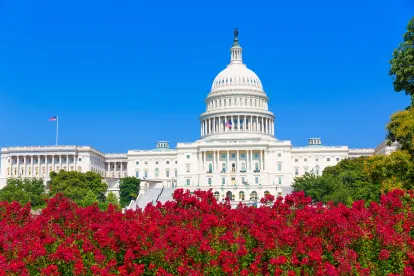On June 3, 2020, the U.S. Senate unanimously approved H.R. 7010, known as the Paycheck Protection Program Flexibility Act of 2020 (PPP Flexibility Act), which was signed into law by President Donald J. Trump on June 5, 2020. The PPP Flexibility Act makes several critical changes to the Paycheck Protection Program (PPP), which was created under the Coronavirus Aid, Relief, and Economic Security Act (CARES Act). The changes provide relief to many businesses currently using PPP loan proceeds and preparing to seek loan forgiveness within the requirements of the CARES Act.
KEY CHANGES UNDER THE PPP FLEXIBILITY ACT
Loan terms
-
Under the CARES Act, a PPP loan could have a maximum maturity of 10 years. The U.S. Small Business Administration (SBA) subsequently assigned a maturity of two years for all PPP loans. The PPP Flexibility Act now requires that all future PPP loans have a minimum maturity of five years. It is important to note that this change to the PPP does not apply to existing loans, but lenders and borrowers may mutually agree to amend these loans to conform to the new five-year term.
-
Previously, payments of principal and interest on existing PPP loans were deferred for a period of six months from the date of the loan. The PPP Flexibility Act extends the deferral period to the date the lender receives the forgiven amount from SBA. If a borrower does not apply for loan forgiveness within 10 months following the end of the covered period, the deferral period will end on the date that is 10 months after the last day of the covered period.
-
Existing loan documentation which does not provide flexibility for terms based on changes to the rules and regulations of the PPP may need to be amended. Borrowers should work with their lender to address any necessary modifications to their loan documentation so that the changes under the PPP Flexibility Act apply to any unforgiven balance of the loan.
Receipt and uses of PPP loan proceeds
-
Under the CARES Act, a business could be eligible to receive a PPP loan, and use the proceeds for specified costs, during the period beginning Feb. 15, 2020, and ending June 30, 2020. The PPP Flexibility Act extends this period to Dec. 31, 2020, and allows borrowers to apply for and use the proceeds of a PPP loan until the end of the year.
Loan forgiveness
-
The most notable changes in the PPP Flexibility Act are to the loan forgiveness provisions of the PPP. The CARES Act allowed for loan forgiveness up to the original principal amount of the loan based on specified payroll and non-payroll costs incurred or paid during a covered period of eight weeks beginning on the date of the loan. The PPP Flexibility Act extends this covered period and a borrower may now apply for forgiveness based on the payroll and non-payroll costs incurred or paid over a period beginning on the date of the loan and ending 24 weeks after such date or Dec. 31, 2020, whichever is earlier.
-
Following enactment of the CARES Act, SBA issued guidance requiring that no more than 25 percent of the forgiven amount be attributable to non-payroll costs. This meant that if payroll costs did not account for 75 percent of the total costs eligible for forgiveness, then the borrower’s loan forgiveness would be capped at the 75 percent level. The PPP Flexibility Act loosens this requirement and increases the percentage for non-payroll costs to 40 percent. However, the actual language of the PPP Flexibility Act requiring a borrower to use 60 percent of the loan amount for payroll costs raises two notable issues:
-
The 60 percent requirement is based on the original loan amount, not the eligible forgiveness amount. Presumably, with the expansion of the eight-week covered period, borrowers will be able to use more of their loan proceeds to pay payroll costs and satisfy the 60 percent requirement.
-
The changes appear to create a cliff – “to receive loan forgiveness, a borrower shall use 60% of the loan amount for payroll costs.” This appears to mean that no amount will be forgiven if the borrower doesn’t use 60 percent of the loan proceeds for payroll costs.
-
If a borrower received its loan prior to enactment of the PPP Flexibility Act, it may elect to use the original eight-week period beginning on the date of the loan to determine forgiveness. However, if a borrower makes this election, it is not clear if the other changes under the PPP Flexibility Act must be applied, including the 60 percent requirement discussed above.
FTE/wage reduction safe harbors
-
The calculations to determine whether the loan forgiveness amount must be reduced based on reductions in full time equivalent (FTE) headcount and wages under the CARES Act and existing SBA guidance continue to apply. However, certain safe harbors have been modified or added by the PPP Flexibility Act.
-
Previously, the forgiveness amount would not be subject to reduction if a borrower restored its FTE headcount and wages by June 30, 2020. The PPP Flexibility Act extends this deadline to Dec. 31, 2020. This means that if a borrower restores its FTE headcount and wages to its Feb. 15, 2020, levels by the end of 2020, no reduction in forgiveness will apply.
-
The PPP Flexibility Act adds a new safe harbor for FTE reductions to address a borrower’s inability to rehire employees or resume pre-pandemic business activity. This new safe harbor provides that a reduction in the number of FTE employees will be disregarded if:
-
-
The borrower is able to document an inability to rehire individuals who were employees on Feb. 15, 2020, and an inability to hire similarly qualified employees for unfilled positions on or before Dec. 31, 2020.
-
The borrower is able to document an inability to return to the same level of business activity as it was operating at before Feb. 15, 2020, due to compliance with requirements established or guidance issued by the Secretary of Health and Human Services, the Director of the Centers for Disease Control and Prevention, or the Occupational Safety and Health Administration during the period beginning on March 1, 2020, and ending Dec. 31, 2020, related to the maintenance of standards for sanitation, social distancing, or any other worker or customer safety requirement related to the 2019 novel coronavirus (COVID–19).
Payroll tax deferral
-
The PPP Flexibility Act eliminates the exception to the allowance for deferral of payroll taxes relating to loan forgiveness. Previously, if a borrower received loan forgiveness, it could not continue to defer payroll taxes as allowed under the CARES Act. A borrower may now continue to defer 2020 payroll taxes, even after it receives loan forgiveness.
Leading up to the passage of the PPP Flexibility Act, certain senators expressed concern with extending the application window to the end of the year as well as the cliff nature of the 60 percent requirement discussed previously. Additionally, certain banking trade groups are pushing for SBA to allow automatic forgiveness for loans less than $150,000.
SBA has not further clarified the necessity certification and how it will go about auditing the thousands of loans above $2 million. SBA is expected to issue additional guidance in the form of Frequently Asked Questions and interim final rules to implement the provisions of the PPP Flexibility Act and to address inconsistencies with prior guidance and a number of the questions that remain unanswered.



 />i
/>i

